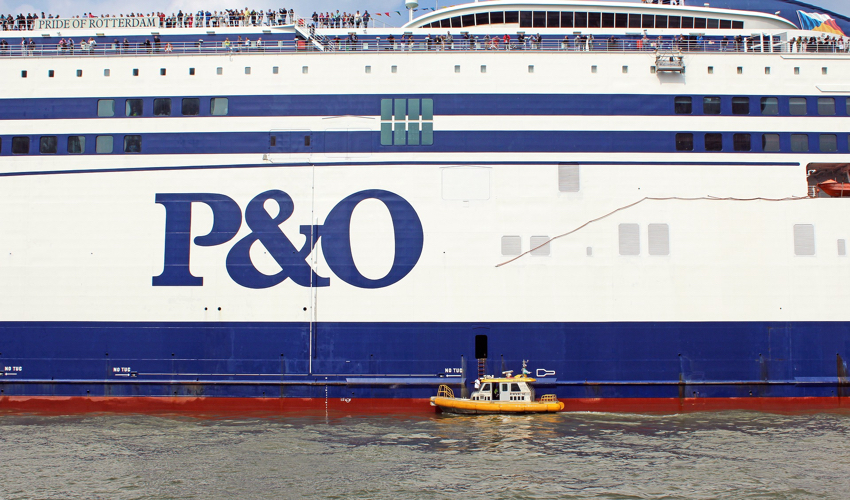P&O Ferries has ordered two 230-metre super-ferries with battery propulsion for the English Channel with Guangzhou Shipyard International. The ferries will be the largest ever to sail between Dover and Calais and feature innovations such as a double-ended design and broader hull form.
The contract is worth 260 million euros and includes an option for a subsequent two vessels. The first two are to be operational by 2023. If the option for the other two is exercised, these are to join the P&O fleet in 2024.
Battery Propulsion
The vessels will cut fuel use by forty per cent through a combination of fuel and battery propulsion. All surplus energy generated by the engines will be stored in the battery. This will enable the engines to be run at the optimum level, with the battery charging when excess energy is being created and discharging when the ship requires peaks of power.
Broader Hull Form
The hull will be far broader than that of the ferries they replace on the Channel. This allows for two azimuth thrusters at each end of the ship to improve the vessel’s manoeuvrability, help drive it through the water and eliminate the need to turn around in port. The naval architects for the project are OSK-ShipTech A/S.
Double-ended Design
The ship is designed with the capacity to become carbon neutral in the future on the twin assumptions that there are more electric shore charging stations in ports and batteries. A double-ended design and two bridges on the ship, mean that there is no need for it to turn around. The captain and senior officers will simply walk to the other end of the ship and navigate from the second bridge on the return leg. This will save seven minutes of time on both the outbound and return journeys and one ton of fuel, a sixth of the amount used on the entire 21-mile crossing.
Power Management
During peak summer season the ship will carry 1500 people. However, during off-peak sailings, up to two thirds of the ship can be closed and the power management system will use innovative software to turn off the lighting and ventilation in empty areas as well as optimising the utilisation of engines, batteries and energy recovered from waste heat.
Heat Recovery System
A heat recovery system will save fuel and reduce the vessels’ carbon footprint by using a steam system to provide heating for ultra-low sulphur fuel oil (ULSFO) fuel heaters, fuel tanks, fuel oil/lube oil purifier heaters and heating, ventilation, and air conditioning (HVAC) system reheating. In addition, a heat pump will be used for HVAC system preheating, domestic hot water, machinery rooms and technical spaces below deck 8.








